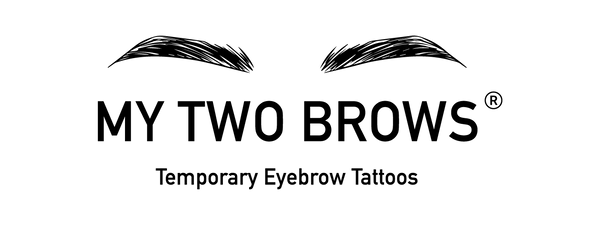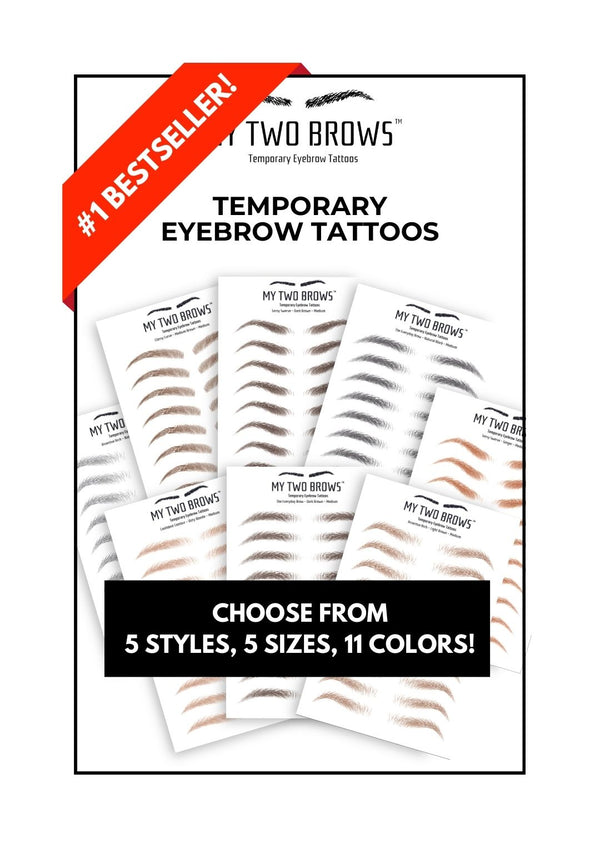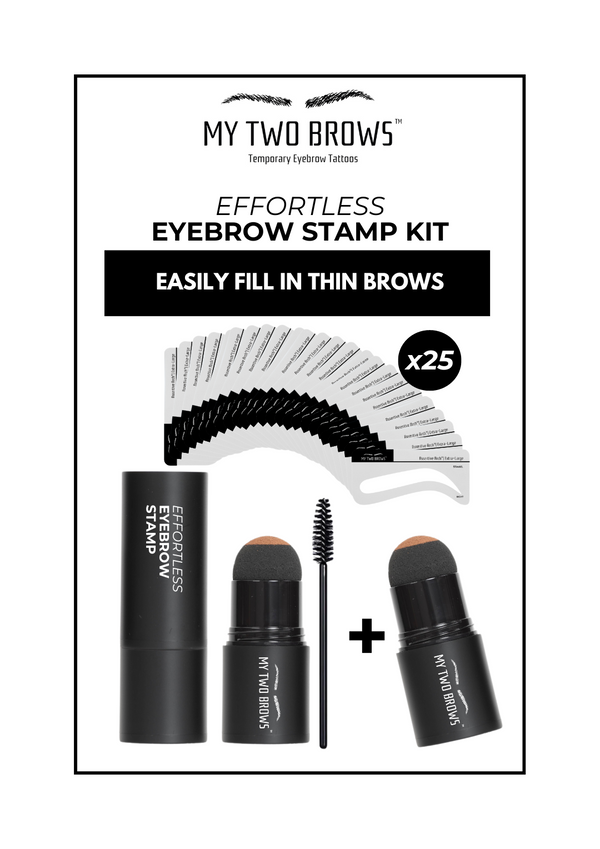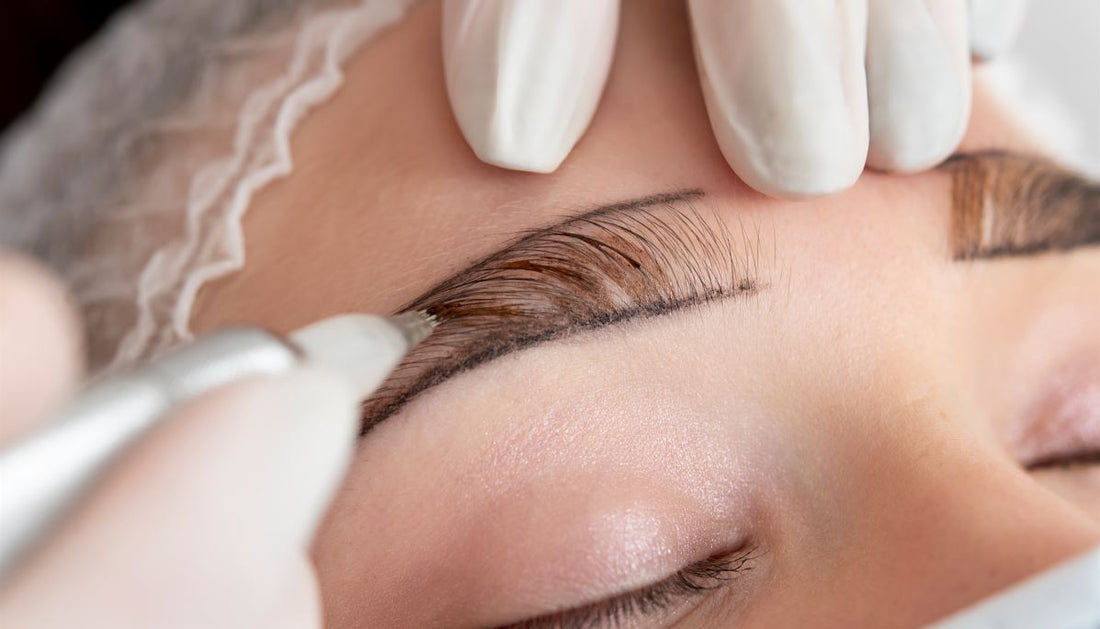
Everything You Need to Know About Microblading Your Eyebrows
Did you know that most people who wear makeup, specifically women, spend an average of 55 minutes a day getting ready? A bulk of that is spent doing eyebrows alone!
Thanks to cosmetic procedures such as microblading eyebrows, that number can greatly lessen. Not only does this mean you get to enjoy extra minutes from your routine, but you also don’t have to worry about drawing the perfect brow shapes before leaving your home. Well, at least not for the next 1 to 2 years.
What Exactly Is Microblading?
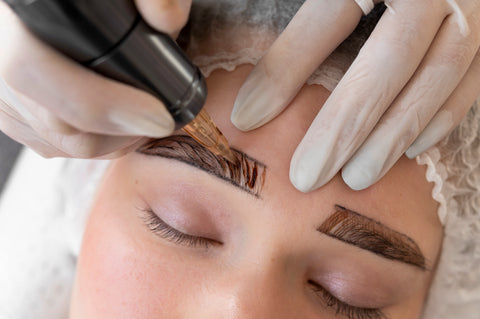
Image by Freepik
Microblading is a minimally invasive procedure that uses a hand-held device to manually apply pigment right under the surface of your skin. The strokes are performed to mimic natural hair strands and should take an average of 2 hours to complete. Once your session is over, you will have to undergo a few weeks of aftercare and healing before you can fully enjoy natural-looking fluffy brows.
Microblading vs Traditional Tattoo vs Powder Brows
Many kinds of cosmetic procedures provide solutions for those without any eyebrows. Three popular choices include traditional tattoos, microblading, and powder brows.
Of the three, a traditional tattoo is the least recommended. Not only do the results look unnatural, but the ink used also tends to discolor over time.
Powder brows, similar to microblading, produce natural-looking results that do not discolor. They are also similar in the healing and aftercare practices, costs, and session duration. The main difference between the two procedures is the type of device used to apply pigment, and the technique used in inserting the product.
How Important Is The Brow Artist in Microblading?
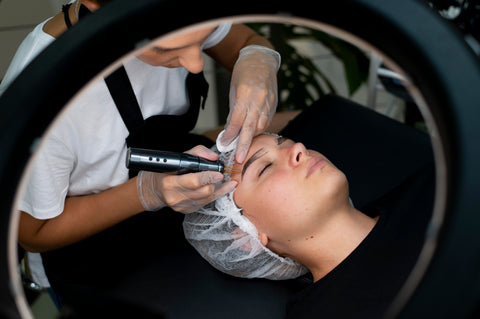
Image by Freepik
The artist you choose to perform your microblading procedure is a huge factor in the success or failure of your brows. Not only will the artist affect the overall cost of your treatment, but the quality of their work will also be semi-permanently displayed on your face. That is a big commitment to uphold when you are not 100% confident in the skillset of your chosen artist.
An artist who is not as professional may not be able to guide you properly in the healing and aftercare process, which heightens the risk of your brows getting an infection.
Microblading and Hair Stroke Technique
The shape of microbladed brows is possible due to the hair stroke technique applied during the session. The way the professional artist handles the device as the pigment is injected into the skin is what creates the illusion of actual hair strands.
This offers a great solution to those whose eyebrows no longer grow back and need to patch up any gaps in a way that blends in naturally.
Why is Microblading Considered Semi-Permanent?
Microblading and powder brows are both considered semi-permanent because they can last between 1 to 3 years. More often than not, microbladed brows can last between 1 and 2 years, depending on the type of skin it is applied on, how the body naturally reacts to the pigment, and also how well the aftercare practices were followed.
So while it does not last forever, it can stay on for a good amount of time, especially when compared to other brow solutions such as henna brows or your everyday brow makeup.
Preparing for Your Microblading Appointment
Just like with any procedure, there are some preparations to do and expectations to manage. Below is a quick guide on how to get ready for your microblading session.
How to Get Your Brows Ready for Microblading
Before your treatment, do not have your brows waxed, tweezed, or threaded. It is also best not to use any skincare products that contain retinol for at least three days before your session.
Moreover, avoid taking ibuprofen, aspirin, caffeine, and alcohol at least two days before the procedure as these can affect how your skin reacts to the treatment and its healing process.
Consulting with Your Microblading Technician
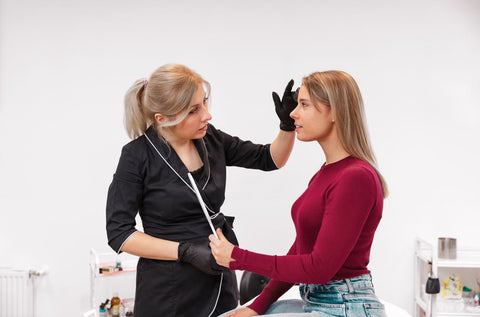
Image by Freepik
When making the appointment, you should ask everything you want to know about your procedure, including certain things to do (or not do) before the session. In this consultation, your technician should also be able to evaluate your skin type and advise you on how best to move forward. In some cases, you may have to see a skin dermatologist to perform certain tests before getting the go-signal to proceed.
The Importance of Hair Color in Microblading
The rule of thumb when selecting your pigment color is that a shade lighter than your natural hair will give a natural look. However, if volume and boldness are what you’re after, getting 1-2 shades darker than your natural hair will work better.
If your hair is colored, your technician should be able to suggest the best hue to help enhance your natural look and properly frame your face.
How Oily Skin Affects Microblading
Microblading can be done on any skin type. However, results will last longer on normal, dry, or combination skin because these secure the pigment better.
Those with oily skin have naturally hydrated faces, which in turn lets the pigment spread out faster. As the pigment moves, the brows start to fade out. Because of this, those with oily skin can expect microbladed brows to last up to 1 year.
What To Expect During The Microblading Process
Now that you have a better idea of how to prepare your brows before the procedure, it is best to learn what you can expect during the session. Your technician should be able to give you a step-by-step run-through before you start, but this is a general guide for it:
Numbing your Brows: The Use of Numbing Cream
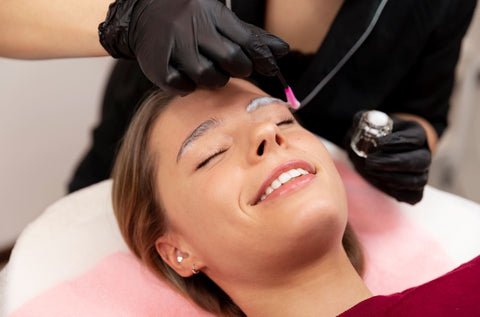
Image by Freepik
The procedure involves special microblading needles attached to a handheld device, which then inserts pigment under the skin. While it is only targeted at a shallow layer of the skin, it still breaks the surface and could potentially cause discomfort. To ensure that you are pain-free during the entirety of the 2-hour session, a numbing cream should be applied before the procedure.
How is the Microblading Pigment Applied?
The microblading needles attached to the hand-held blade-shaped tool are very tiny and are barely visible to the naked eye. These are what carry the pigments and will help produce hair-like strokes. The technique is to move in a swift and smooth potion mimicking your natural hair strands. This produces very natural-looking brows.
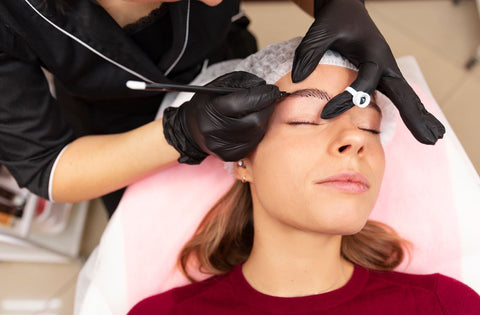
Image by Freepik
Setting Microblading Expectations: Best vs. Probable Results
The best-case scenario when getting your brows microbladed is that it heals nicely within the first month and lasts you about 2 years before needing a touch-up session.
However, there is also a possibility of side effects occurring. Some may be allergic to the pigment used or have sensitive skin that reacts to the needles. There could also be a risk of infection, keloid formation, and scarring. Speaking with your technician to fully understand the risks involved and how to properly mitigate them is important.
The Microblading Healing Process

Microbladed brows are a great way to fix thinning eyebrows semi-permanently. However, it does take some commitment - not only in the 1 to 2 years that your brows stay on but also in practicing effective habits for better healing.
Getting Through The First Week: Scabs & Healing
In the first few days to a week post-treatment, you can expect your brow area to feel tender with some redness, swelling, and maybe mild bleeding. Your brows will also look very bold and full, but don’t worry as this fades in time.
As it starts to fade, you will also experience some skin flaking off and scabbing - this is when you start to feel the itch. Remember not to scratch them as this is a good sign that your skin is healing! If you pick at the scabs, you not only risk reopening wounds but you also end up removing pigment which could result in patchy brows.
When Can You Get Your Brows Wet After Microblading?
The first two weeks of healing and aftercare are the most crucial. Within these 7 to 14 days, it is important to keep your brow area dry even in the shower. You may wash your face slowly, making sure the water does not touch your eyebrows.
The Importance of Aftercare in Microblading
Aftercare is crucial as this is what helps prevent infections, side effects, and complications. Proper aftercare can also significantly impact the healing process and ensure your microbladed brow’s lengthier lifespan.
Why Does Microblading Need Touch-Ups?
Microblading is a semi-permanent treatment designed to only target the shallow layer of skin. Because of this, the pigment inserted can naturally pass through the pores and fade out over time. While property maintenance and certain skin types can keep the pigment in place longer, it is designed to lighten within 1 to 2 years. This is when you would require a touch-up to ensure your brows stay bold and full.
What To Do If Microblading Does Not Heal Well?
The best thing you can do if your microbladed brows are not healing well is to contact a dermatologist and schedule an appointment.
Deciding if Microblading is Right for You
There is rarely a one-size-fits-all solution to brow health issues. Considering all aspects before committing to an invasive procedure is key to preventing any regrets. Here are a few things to consider when deciding if microblading is right for you.
Who is a Good Candidate for Microblading?
Almost anyone is a good candidate for microblading. However, those with excessively oily or sensitive brows, those with skin diseases, and those allergic to pigments should refrain from getting the procedure. Moreover, those with conditions that make it difficult for their body to heal a wound or are currently taking blood thinners should also avoid getting their brows microbladed.
Natural Brow vs. Eyebrows After Microblading (Before & After Expectations)

What to Consider Before Getting Microbladed Eyebrows?
Before getting your brows microbladed, consider the amount of commitment it will take and if it is something you are willing to undertake. Apart from having the microbladed brows on for up to 2 years, you will also be committing to the cost, the potential pain, the aftercare routine, and the healing process.
What else can you try instead of microblading?
If your brows have stopped growing and you want to explore different options, there are many other solutions you can try instead of microblading or similar treatments.
There are natural solutions such as regularly applying eyebrow growth serums and taking supplements to ensure there is no nutrient deficiency causing hair loss.
There are also temporary solutions such as henna brows and temporary eyebrow tattoos. While henna brows are mostly only effective on sparse brows that still have a good amount of hair strands, temporary eyebrow tattoos are perfect even for those with no brows at all. They work in 3 easy steps and come in a variety of brow options.
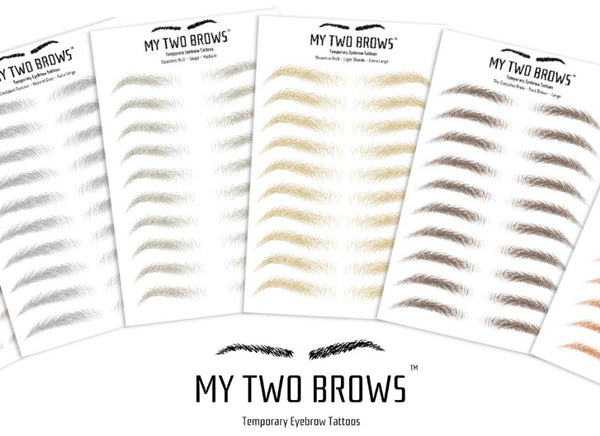
With temporary brow tattoos, you get to choose the brow shape, style, and color you want. Moreover, they last up to 3 days but are easily removable if you wish to switch styles.
You’re All Set!
Microblading eyebrows is a popular solution to brow hair loss. It is relatively similar to powder or combination brows, with the difference being the style. If you wish to explore more alternatives, we are here to guide you through the different options and steps to take to achieve your dream brows!
